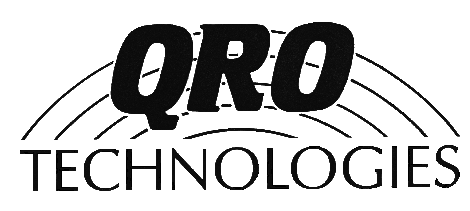
A WORD ABOUT OUR TRANSFORMERS

A
WORD ABOUT OUR TRANSFORMERS
QRO uses “state of the art” transformer designs that start with a design intent for a Class H ( 180 C ) Insulation System. The magnet wire used in the system is a modified polyester/amide imide rated 200 C. To insure no “shorted” electrical failures between the windings, all section insulations use DuPont Nomex 410. This is one of the most widely used materials to meet tough military/industrial high temperature applications. Nomex 410 is rated at 220 C. and has superior physical properties and excellent Dielectric properties to insure a long product life. The interwinding layer insulation is Kraftpaper, which provides good mechanical support and allows for good varnish absorption between the magnet wire winding. Additionally, the high voltage secondary is “wet wound” to reduce magnet wire vibration noise, help with heat dissipation and overcome the problem of varnish penetration into the closely wound, fine wire windings. Note, Vacuum Impregnation Systems must use high viscosity epoxy that is often too thick to fully penetrate into tightly wound, fine wire applications that have a long winding length. The lead wires in the design are Teflon insulated, providing good abrasive resistance and superior temperature rating. The leads are soldered into the winding, and the connections are insulated with 5000 V, Grade A Sleeving. A new major improvement in transformer core design has been the advancement of DG ( distributed gapped ) cores. These cores were first adapted in power utility transformers to lower line losses and in general, improve energy efficiency. Over time, the cores have gained usage with computer controlled winders that can be programmed to produce individual laps of steel thru the core and “distribute” the gaps in various positions as the cores are wound. The cores can be pulled apart and assembled around the coil and the entire core assembly is then banded together using Stainless Steel bands. The core material ( M4, 11 mil ) offers improved performance vs. the tradition grain oriented “Hypersil” steel desired in HAM radio applications. Traditional “cut cores” are bonded together with adhesive, which increases the losses by physically restricting movement due to magnetostriction. To reduce noise, an adhesives is often used to glue the two core halves together. This introduces a large gap in the core structure, further producing higher losses. Over time, high core operating temperature will soften and decompose the adhesives, which may lead to physical distortion, separation of the laminations or in general, lamination noise. To complete the assembly, the transformer is impregnated with a 100% solids epoxy insulating resin, rated 220 C. A final shiny black enamel varnish spray is applied.
Copyright
© 1996 - 2012, QRO Technologies, Inc., All Rights Reserved
Last Modified:
September 06, 2017 02:54:12 PM